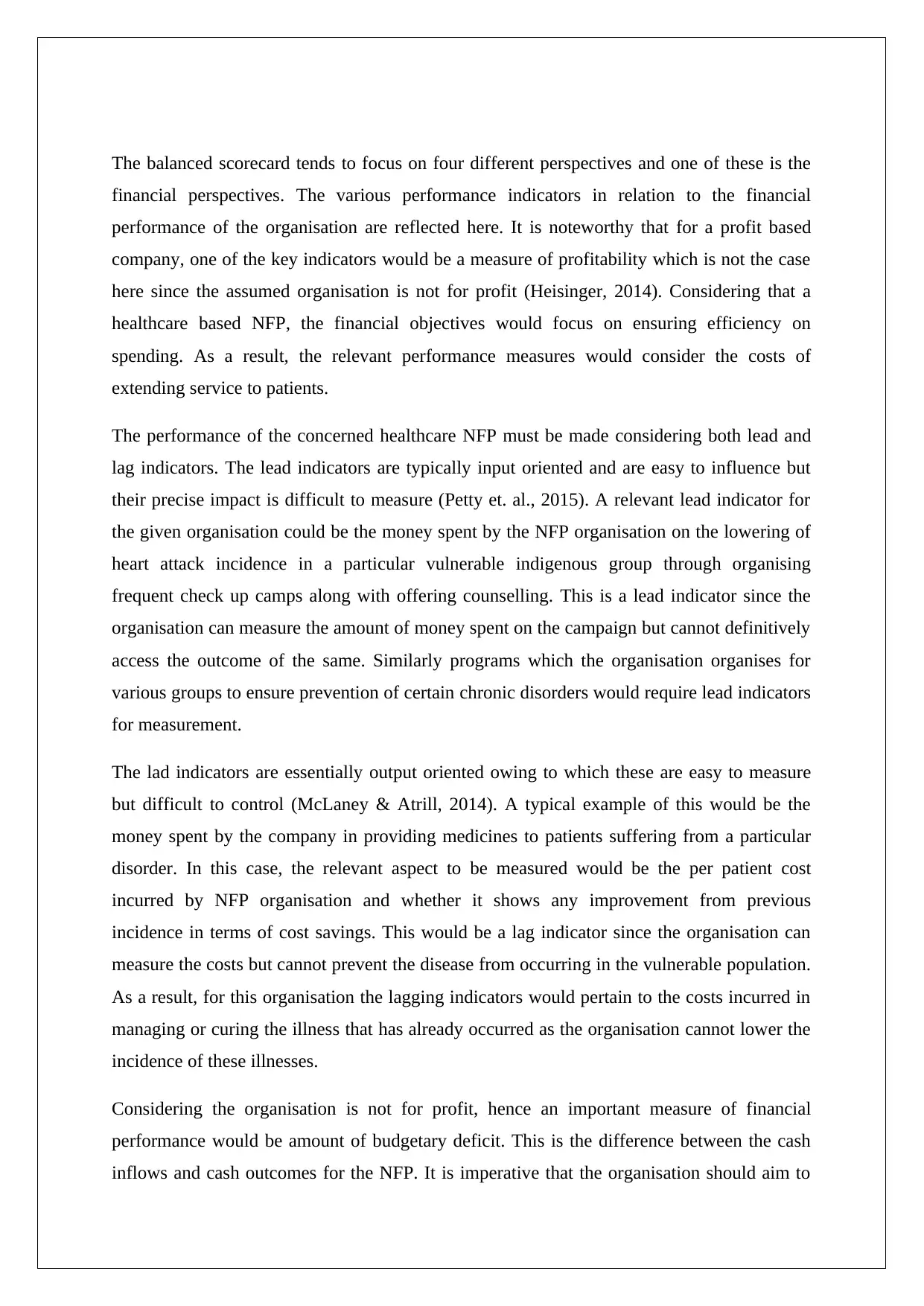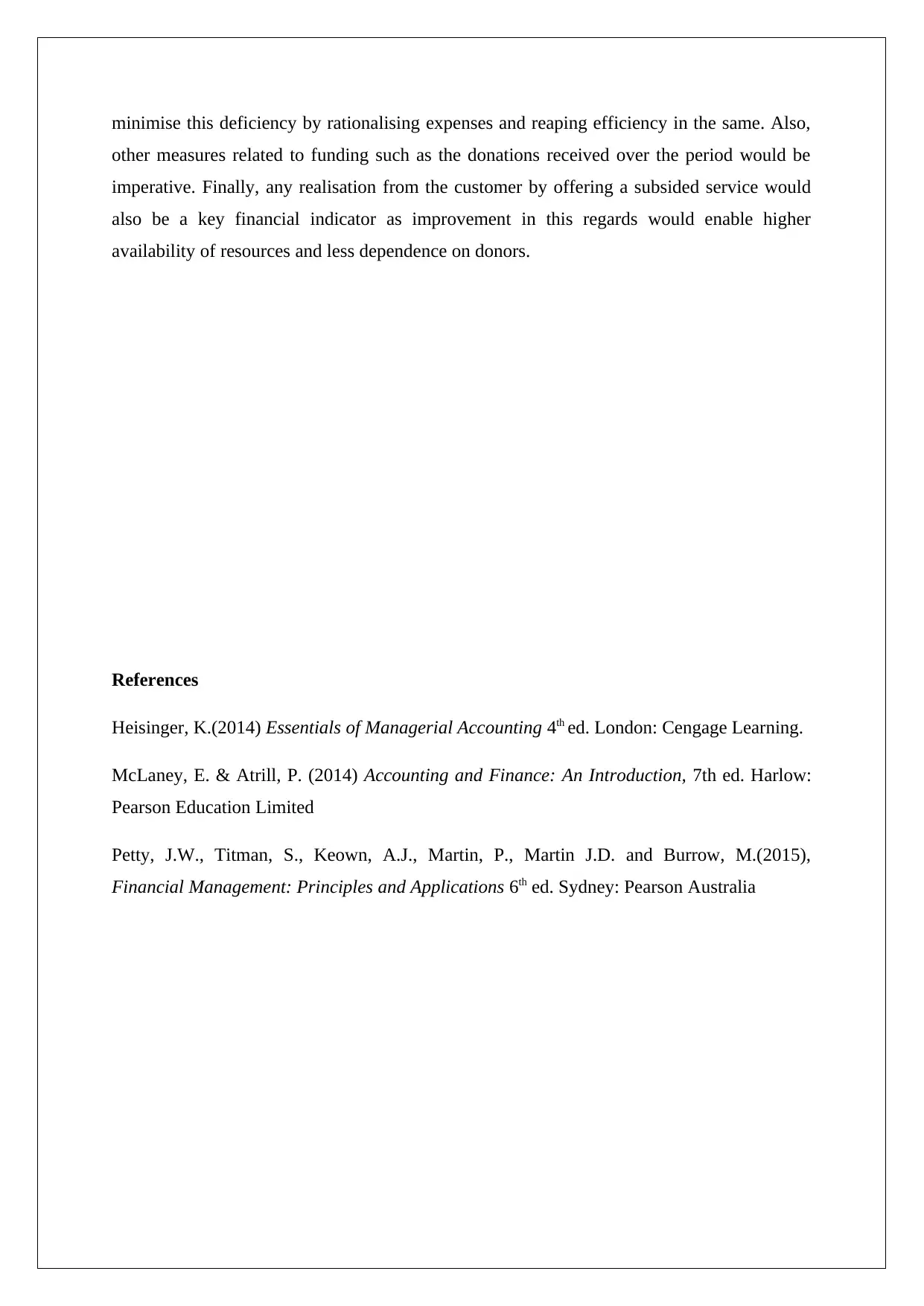Management Accounting ACCT4440 Report: Balanced Scorecard and Finance
VerifiedAdded on 2022/10/01
|3
|611
|118
Report
AI Summary
This report provides an analysis of a balanced scorecard (BSC), developed by Kaplan and Norton, focusing on the financial perspectives within a non-profit healthcare organization. The analysis emphasizes the importance of efficiency in spending, given the absence of profit-based measures. It explores both lead indicators (input-oriented, influencing factors like spending on preventative programs) and lag indicators (output-oriented, measuring outcomes like costs of managing illnesses). The report also highlights the significance of budgetary deficit minimization and other financial measures like donations and customer service revenue. The paper concludes by referencing key financial performance indicators for the non-profit, emphasizing the importance of balancing financial objectives. The report references Heisinger (2014), McLaney & Atrill (2014) and Petty et. al. (2015) in the analysis.
1 out of 3





![[object Object]](/_next/static/media/star-bottom.7253800d.svg)